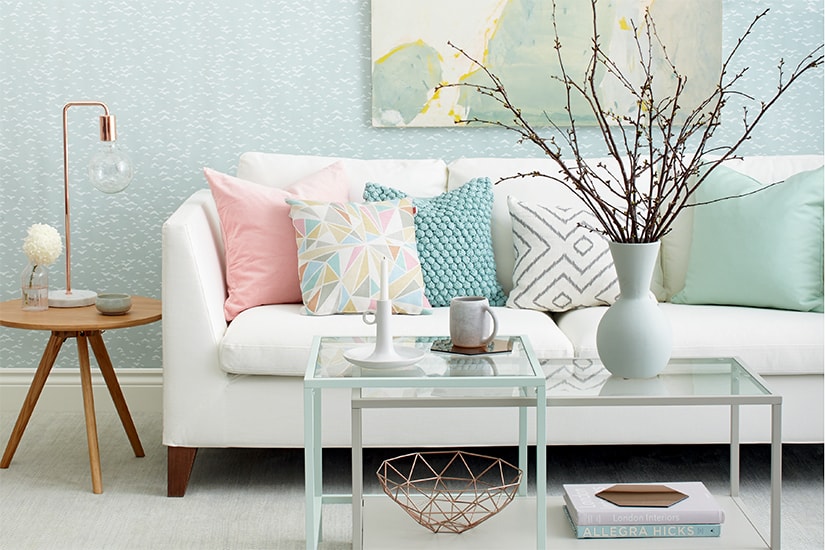Design Experts
Inside design: Mary Randolph Carter

Design Experts
Inside design: Mary Randolph Carter
An admitted junk junkie, New York-based writer and editor Mary Randolph Carter worked her way through a number of positions in publishing -- including beauty and health editor at Mademoiselle and creative director at Self -- before penning her passion: American Junk ($38, Rizzoli) in 1994. It was followed by three more Junk books and her most recent effort, For the Love of Old: Living with Chipped, Frayed, Tarnished, Faded, Tattered, Worn and Weathered Things That Bring Comfort, Character and Joy to the Places We Call Home ($67, Rizzoli, 2006). These days, Carter is kept busy as senior vice-president of publishing for Polo Ralph Lauren -- when she isn't rummaging through dusty thrift shops, that is.
STYLE AT HOME: So, we're here today to talk about a bunch of junk! What is junk exactly?
Mary Randolph Carter: (Laughs) Well, to me, junk isn't really junk, it's just anything old. When I published American Junk, I had to fight with the publishers for the name. They wondered how we would sell this beautiful, high-end book with the word junk emblazoned across the cover. But I firmly believe we choose what has value. It's not about the provenance or the period; it's about what speaks to you, what you love -- whether you find it at a yard sale or an antique shop.
S@H: Why is junk so important?
MRC: It has nostalgic value. I want my home to be comforting, to have continuity with my past, to reflect my life. To me, what that means is being surrounded by things that evoke memories -- of the past, of travels, of experiences. It's the faded photo of your grandparents in a modern stainless-steel frame or the set of dishes that reminds you of the ones you had at the cabin.
S@H: Do you think there's really a place for junk in the modern home?
MRC: Absolutely. The contradiction of old and new makes life interesting. I think you need unique old pieces to offset modernity. For example, my son and I found a coffee table for his condominium that someone had covered with paper matchbook covers. We had a piece of glass cut to cover it, and now the table serves as a great counterpoint to all the chrome and steel in his very contemporary home. The coffee table adds warmth -- it's like wearing a vintage jacket with a new pair of boots. You need to mix things up a little, or an environment quickly becomes stale and lacking in personality.
Main image by Mary Randolph Carter
S@H: Tell us, how did your own love affair with all things old begin?
MRC: I'm from Virginia, the eldest of nine children. We grew up in a beautifully restored barn. When I was 16, that house burned to the ground. Everything was lost (except our lives, thankfully), including family heirlooms, photos and books read to us time and time again. I learned an important lesson about which material possessions meant the most to me. When we started over, we didn't buy brand-new stuff. My parents went out and found antiques to replace old family pieces. We had a doormat that said: "A well-kept home is the sign of a misspent life." I guess you could say collecting and treasuring things from the past was a family value. Junking was just natural. There's something so exciting about the jumble, the chaos of a secondhand shop.
S@H: How do you possibly find the hidden treasures in all that chaos?
MRC: When you're just getting started, it really helps to pick a theme and begin a collection. For example, I like things that can hang on a wall because I've run out of room everywhere else in my house! After years, you develop an eye, an instinct for what will be a great addition to your home. Some people are drawn to vintage toys, or plates or items for the kitchen. I love thrift-shop art; you can often find gems in ugly frames. And by the way, don't ever be put off by a shabby frame; often a dealer is charging more money for the frame than the picture, so I always ask if I can just buy the art.
S@H: When is junk just, well, junk?
MRC: I always tell people to be careful when buying lamps or anything electrical -- too many things can go wrong. Double-check old upholstered chairs, too; it may turn out you've bought more than you bargained for. For instance, if the springs need replacing and the fabric is rotten and decayed, that $5 chair may end up costing you $300. If you really love it, maybe it's worth that much money. But if you don't, then it's worthless -- and that's not junk, that's garbage.
More for less
How can you get the most out of a thrift-store spree? Mary Randolph Carter shares these four handy tips.
1 Be prepared, like a good girl or boy scout. Think ahead. Are you looking for a bedside table for the guest room or Easter costumes for the kids? "Make a list so you can stay on track and not get overwhelmed," says Carter. "Your list is your compass in the wilderness."
2 Trust your instincts. "Good junk is linked to good memories, so if you find yourself saying, 'Oh that reminds me of the time...' chances are you're onto a good thing."
3 Case the joint. Do a walk-through, making mental notes about what items strike your fancy and what ones you feel you can pass on.
4 Haggle -- it's part of the sport. "I always ask the proprietor if I can start a pile. Then, when I'm ready to cash out, I start negotiating."
Photography by Mary Randolph Carter from For the Love of Old (Rizzoli, 2006 )














Comments